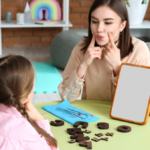
Karen Karbo, The New York Times Best-selling Author
If you’re a writer with a dream, get one step closer to becoming a writer with an agent by attending the SDSU Writers’ Conference.
Among the many top industry professionals who will share their wisdom is New York Times best-selling author Karen Karbo (KarenKarbo.com), creator of the Kick Ass Women’s Series which includes How to Hepburn, The Gospel According to Coco Chanel, How Georgia Became O’Keeffe, and most recently, Julia Child Rules.
Her three novels ̶ Trespassers Welcome Here, The Diamond Lane, and Motherhood Made a Man Out of Me ̶ and her memoir, The Stuff of Life, were all named New York Times‘ Notable Books of the Year.
Her essays and articles have appeared in Slate, The New York Times, Elle, O, Vogue, and Outside magazine. Karbo also wrote the Minerva Clark mystery series for children: Minerva Clark Gets a Clue, Minerva Clark Goes to the Dogs, and Minerva Clark Gives Up the Ghost.
She’s a recipient of a National Endowment for the Arts Fiction Fellowship and, recently, an Amtrak Residency – a brilliant new program from Amtrak in which 24 writers from across the country will work on writing projects of their choice while on a cross-country train ride.
On Saturday, Jan. 24, in her workshop “The Girl You Want to Hate,” Karbo will address the issue of manuscripts being rejected because the main character, if female, isn’t “nice” enough. You’ll learn how to craft complex, often not-so-nice characters that drive drama and make for a more interesting read.
On Sunday, Jan. 25, Karbo will present “Quitting Your Day Job: The Art Science and Lunacy of Making a Living as a Writer.”
1. How did you get your break for your first novel, Trespassers Welcome Here (1990)?
Trespassers was my first attempt at fiction. My MA was in film and I’d written eight screenplays that never really went anywhere (some were optioned, a few were put into development, but they all died on the vine) and I began to think that writing fiction would at least allow me to have some readers. I took a fiction writing workshop, and the first story of the linked stories that became Trespassers was written there. I published four of the stories in literary magazines as I wrote, then, when the book was done, I began sending it around to agents and editors. In those days quite a few publishers still read unsolicited manuscripts. I had a half-dozen rejections, then received a letter from a young agent named Sally Wofford at the Elaine Markson Literary Agency. Her good friend Jean Hanff Korelitz (who would go on to become a celebrated novelist, but at the time was an editorial assistant in charge of weeding through the slush pile) read my manuscript and recommended it to her boss, but he wouldn’t even look at it. She was so frustrated she called Sally and said, “If you’re looking for new clients, try this writer.”
I didn’t know any of this when I received Sally’s letter, and since I lived in Portland, Oregon (not the hipster’s paradise it is today, but a place everyone east of the Rockies routinely confused with the city in Maine) and knew no one in publishing, I wondered whether anyone who would actually take the time to seek ME out, was legit. But Sally was, and I said yes, and not a week later the book was bought by Stacy Creamer (who’s at the 2015 SDSU Writers’ Conference!), then an editor at G.P. Putnam’s Sons.
2. What’s your favorite movie and do you have any aspirations to write a screenplay again?
So many “favorites” (like how middle schoolers can have a dozen bffs). How to Marry a Millionaire (Jack Lemmon and Tony Curtis in drag, Marilyn Monroe playing the ukulele). The Godfather movies. Chinatown. Annie Hall. All classic film school nerd favorites. More recently, the documentary, Twenty Feet from Stardom. Also, just saw Selma, which is fantastic.
3. What was the catalyst for your Kick Ass Women series?
I had just written, published and toured with my memoir The Stuff of Life, about the last year I spent with my father before he died. I was glum. I wanted to write something uplifting, enjoyable and fun. I couldn’t think what that would be, but I had recently read How Proust Can Change Your Life, by Alain de Botton, and adored it. I loved the literary biography/memoir/cheeky self-help mash-up quality and thought, if I could give anyone the same treatment, who would it be? Katharine Hepburn, one of my favorite actresses, popped into my head, and the rest is history.
4. You appear to be kick-ass (swimming with sharks and such). Were you always so?
Let’s just say I have a high tolerance for risk. An aptitude test I took in high school revealed that my perfect job was test pilot. (Weirdly, one of those lame BuzzFeed quizzes determined that my perfect occupation is astronaut.)
5. What’s the first book that spoke to you as a young reader?
Great question. It would have to be The Group, by Mary McCarthy, about eight friends from Vassar, which I found exciting and impossibly dirty, even though I must have been in fourth grade and had no clue what was actually going on (birth control, lesbians, female anger issues). I gobbled it up, excited by the idea that there was always a lot of stuff going on under the words, and it was my job, as a reader, to figure it out. My parents had bookcases full of all kinds of books, and there was absolutely no censorship. They were like, “If you can read it, you may read it.”
6. One of your sessions at the conference is “The Girl You Want to Hate”– which is about how often manuscripts are rejected because the main character (if female) isn’t “nice” enough. Has this happened to you? What’s the minimal way in which a writer could address this?
Happens all the time. Even with the Kick Ass Women series. When I was on book tour, especially with The Gospel According to Coco Chanel, someone would always say “but Chanel didn’t seem like she was very nice.” As if that has anything to do with anything. Women readers tend to be harder on female protagonists. I have a lot of lawyers in the family, and they all say that if they had a female defendant, they never want a woman judge. I think it’s because we all struggle with whatever the hell it is we’re supposed to be doing as females in our culture (Lean in! Kick ass! Accommodate everyone! Wait, don’t accommodate everyone! And always, be smokin’ hot!) and we project that onto the heroine. The best way to address this is also the most challenging: to grant our female characters the full measure of their humanity.
7. What’s a good literary example of a not-nice female protagonist that had just enough nice to make the cut?
The classic not-nice girl: Scarlett O’Hara. More recently: “Amazing” Amy, from Gone Girl. A lot of people really did hate her, but they kept reading.
8. Your other conference session is “Quitting Your Day Job: The Art, Science and Lunacy of Making a Living as a Writer.” At what point in your career did you quit the day job?
In 1990 I received a book advance and was awarded a grant, and together that was more than I had made at my day job (curating film festivals at a nonprofit film center). I said (to myself and my husband) if I could continue to make that amount every year, I could quit my job and I did. I’ve been able to do it ever since, but I’ve had to shore up the advances with magazine writing, the occasional teaching gig, and some very lucrative ghost writing.
9. Congratulations on being selected for the Amtrak Residency Program, out of 16,000 applicants. The whole concept is brilliant. How long will you be on the train, what destination, and what will you be working on?
I’m taking the Empire Builder from Portland to Chicago, and it’s 48 hours each way. I have to spend the night in Chicago, so the whole trip will be five days. I’m hoping to finish up a novel I’ve been hacking away at for a few years.
10. I read that you wrote your first novel in kindergarten –”What Next?”– about five people stuck in an elevator who don’t know each other. That’s fabulous. Do you still have it? How does it end?
I do still have it. It’s a little, let’s say, open-ended, but I think the gist is that all the alliances shifted around and by the time they were rescued, the people who liked each other hated each other, and the people who hated each other liked each other.
11. What advice do you have for aspiring writers?
“Keep your eyes on your own paper.” (Meaning, focus every day on what only you can say, and try not to pay too much attention to what’s going on out there.)
For more information about the SDSU Writers’ Conference, visit neverstoplearning.net/writers




